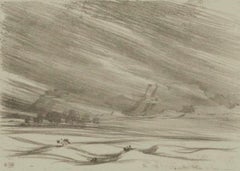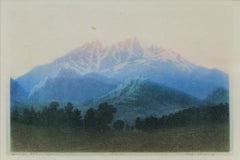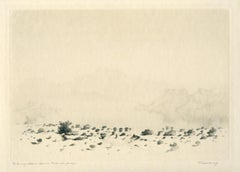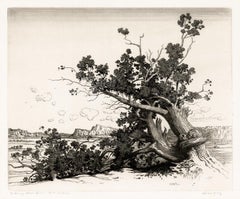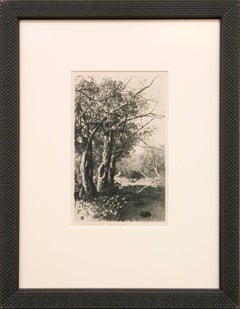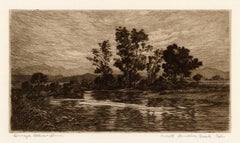George Elbert Burr Etchings
Early 20th Century American Modern Landscape Prints
Watercolor
1920s American Impressionist Landscape Prints
Aquatint
1920s Prints and Multiples
Drypoint, Etching
1920s Realist Landscape Prints
Etching
Recent Sales
1920s Post-Impressionist Landscape Prints
Etching
1910s American Impressionist Landscape Prints
Etching
1920s American Realist Landscape Prints
Etching
1920s American Realist Landscape Prints
Etching
Early 20th Century American Modern Landscape Prints
Drypoint, Etching
Early 20th Century Realist Landscape Prints
Engraving, Etching
Early 20th Century American Modern Landscape Prints
Etching, Aquatint
People Also Browsed
Mid-20th Century American Mid-Century Modern Commodes and Chests of Drawers
Wood
2010s American Impressionist Landscape Paintings
Canvas, Oil
21st Century and Contemporary Contemporary Landscape Paintings
Watercolor
1980s Pop Art Landscape Prints
Offset
2010s American Impressionist Landscape Paintings
Wood, Oil
1940s American Impressionist Landscape Paintings
Oil
1950s Prints and Multiples
Lithograph
1880s Landscape Prints
Etching
1910s Post-Impressionist Landscape Paintings
Oil, Board
1950s Landscape Photography
Silver Gelatin
1970s Impressionist Landscape Paintings
Oil, Canvas
Mid-20th Century American Mid-Century Modern Commodes and Chests of Drawers
Mahogany
1930s American Impressionist Landscape Paintings
Oil
Early 20th Century American Impressionist Landscape Drawings and Waterco...
Color Pencil, Paper
Mid-20th Century Italian Mid-Century Modern Vases
Glass, Murano Glass, Art Glass
Mid-20th Century American Realist Landscape Paintings
Oil, Panel
George Elbert Burr for sale on 1stDibs
George Elbert Burr was an American printmaker and painter best known for his etchings and drypoints of the desert and mountain regions of the American West. He enjoyed success early, providing illustrations for Harper's, Scribner's Magazine, Frank Leslie's Weekly, and The Cosmopolitan. In 1892, he began a four-year project illustrating a catalog of Heber R. Bishop's collection of jade antiquities for the Metropolitan Museum of Art. This project, producing etchings of over a thousand artifacts, paid well enough for Burr to embark on an extended tour of Europe upon its completion with his wife. Over the next five years, as they traveled in Italy, Germany, and the British Isles, Burr amassed sketches and watercolors that would provide the source material for his copper plate etchings of European scenes. In 1924, the Burrs settled in Phoenix, Arizona, where he would remain for the rest of his life. The change of scenery allowed him to round out his oeuvre of Western landscapes with expansive views of the Sonoran and Mojave deserts. He and his wife, who died in 1941, are buried in Cameron. Today, George Elbert Burr is widely considered to be one of the finest of the early 20th-century American etchers. His prints are in several prominent collections including the Smithsonian American Art Museum, the British Museum, the French National Print Collection, Luxembourg Gallery, Victoria and Albert Museum, the New York Public Library, Brooklyn Museum, Museum of Northern Arizona and the Congressional Library in Washington, D.C.
Finding the Right Prints And Multiples for You
Decorating with fine art prints — whether they’re figurative prints, abstract prints or another variety — has always been a practical way of bringing a space to life as well as bringing works by an artist you love into your home.
Pursued in the 1960s and ’70s, largely by Pop artists drawn to its associations with mass production, advertising, packaging and seriality, as well as those challenging the primacy of the Abstract Expressionist brushstroke, printmaking was embraced in the 1980s by painters and conceptual artists ranging from David Salle and Elizabeth Murray to Adrian Piper and Sherrie Levine.
Printmaking is the transfer of an image from one surface to another. An artist takes a material like stone, metal, wood or wax, carves, incises, draws or otherwise marks it with an image, inks or paints it and then transfers the image to a piece of paper or other material.
Fine art prints are frequently confused with their more commercial counterparts. After all, our closest connection to the printed image is through mass-produced newspapers, magazines and books, and many people don’t realize that even though prints are editions, they start with an original image created by an artist with the intent of reproducing it in a small batch. Fine art prints are created in strictly limited editions — 20 or 30 or maybe 50 — and are always based on an image created specifically to be made into an edition.
Many people think of revered Dutch artist Rembrandt as a painter but may not know that he was a printmaker as well. His prints have been preserved in time along with the work of other celebrated printmakers such as Pablo Picasso, Salvador Dalí and Andy Warhol. These fine art prints are still highly sought after by collectors.
“It’s another tool in the artist’s toolbox, just like painting or sculpture or anything else that an artist uses in the service of mark making or expressing him- or herself,” says International Fine Print Dealers Association (IFPDA) vice president Betsy Senior, of New York’s Betsy Senior Fine Art, Inc.
Because artist’s editions tend to be more affordable and available than his or her unique works, they’re more accessible and can be a great opportunity to bring a variety of colors, textures and shapes into a space.
For tight corners, select small fine art prints as opposed to the oversized bold piece you’ll hang as a focal point in the dining area. But be careful not to choose something that is too big for your space. And feel free to lean into it if need be — not every work needs picture-hanging hooks. Leaning a larger fine art print against the wall behind a bookcase can add a stylish installation-type dynamic to your living room. (Read more about how to arrange wall art here.)
Find fine art prints for sale on 1stDibs today.
